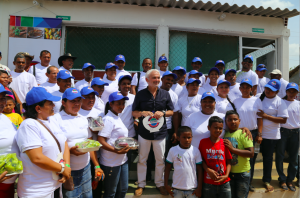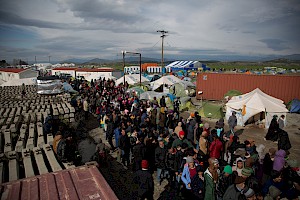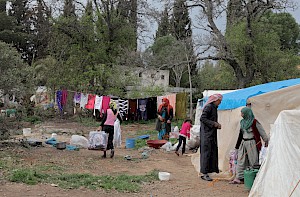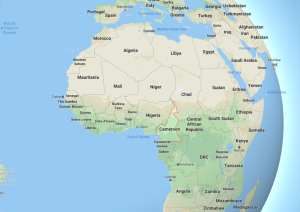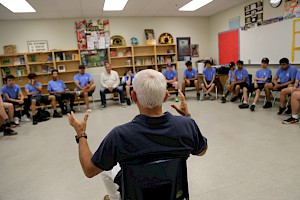The Cost of Peace
January 04, 2022Originally published in Philanthropy News Digest on December 23, 2021
War is expensive. Bloody and expensive. According to the Institute for Economics and Peace, conflict violence cost the world $519 billion in economic activity in 2019 alone. Add to that the human cost — some seventy-six thousand lives lost that same year and millions more fleeing their homes, bringing the total number of displaced persons globally to nearly eighty million — and you begin to get the picture of the true cost of war. The United States has spent and obligated $8 trillion (including veterans care, nation building, interest payments, etc.) on the post-9/11 wars in Iraq, Afghanistan, and elsewhere through 2021. These are monies that could have gone to education, infrastructure, health care, and job creation. According to the Stockholm International Peace Research Institute, global military expenditure rose to a staggering $2 trillion last year, with the U.S .leading the way by a wide margin. All of which leads one to wonder why more is not being done to remedy this tragic situation. Where are the peace-mongers?
Well, they do exist. The good news is that there are numerous organizations dedicated to the advancement of dialogue, peace, and security. The much less good news is that these organizations collectively receive barely 1 percent of all philanthropic funding, according to a report from the Peace and Security Funders Group and Candid — and a lot less, according to data from the Organisation for Economic Cooperation and Development. Global philanthropic support for efforts to prevent, mitigate, and resolve conflicts totaled $376 million in 2018. Yes, millions, compared with the trillions in military expenditures. There has always been something perverse about the imbalance of resources dedicated to war versus those that are dedicated to peace. Unfortunately, that’s the world we live in, and undoubtedly, the propensity for conflict will always be with us in one form or another.
Aside from the horrific human cost and the gargantuan economic costs, there is another important reason why more philanthropic funding should be directed to peace and security: Without peace and security, you can forget about advancing any of the other social issues that philanthropy is trying to address. As I have discovered first-hand through my own foundation’s work around the world, it’s impossible to implement solutions in issue areas like health, education, and poverty unless you have a peaceful and stable environment to work in. Caring for and resettling refugees is another area I am involved in, and needless to say, the absence of conflict would make that work less necessary.
We tend to look to governments and the United Nations to solve deadly conflicts, and that is one reason why peace and security efforts receive so little funding from individuals and the private philanthropies: We think it’s their responsibility, not ours. The facts tell a different story. The UN Security Council has three permanent members — China, Russia, and the U.S. — that often hobble its effectiveness in resolving particular conflicts.
Other reasons why peace and security receive so little funding are that private foundations consider it too political and, more importantly, that success is difficult to measure. How does one show that a war was prevented if nothing happened? One of the most common excuses for the lack of interest is that many donors feel that peace building is a hopeless exercise. In other words, conflict is an inevitable feature of the human condition. On that point, I beg to differ.
As co-chair of the board of the International Crisis Group, a global organization dedicated to preventing wars and shaping policies that will build a more peaceful world, I have seen plenty of evidence that our work makes a difference. Admittedly, we cannot prevent or end all conflicts, but we have had our share of successes.
In Yemen, for instance, ICG has played an important role in delivering early warnings on major turning points in the conflict’s trajectory, proposing meaningful solutions that have often been adopted by international, regional, and local players. ICG has also been at the forefront of efforts to recalibrate the international response to the war by making UN-led mediation more inclusive and hence more sustainable, including through the inclusion of women. We faced skepticism when we first floated these ideas, which are focused more on shaping long-term peace in Yemen than producing instant results.
According to a 2019 UN report, the conflict had by then cost Yemen more than $100 billion in potential gross domestic product. The same report assesses that by the end of 2022 some four hundred and eighty-two thousand Yemenis will have been killed by the conflict, 65 percent of them through indirect causes, that is, by hunger and preventable disease rather than airstrikes or frontline fighting.
ICG is just one of a number of organizations dedicated to peace and security, and everything we do globally, from field-based research to our advocacy efforts, costs approximately $21 million per year. As small as that amount sounds, it’s not always been easy to raise the funding we need to continue our work. On a global basis, doubling the philanthropic dollars that currently go to peace and security — $376 million as of 2018 — it would take $100 million less than what Jeff Bezos paid for his super yacht. Juxtapose that amount against the cost of just one conflict (say, Yemen), and it doesn’t take a PhD in math to do the cost/benefit analysis.
The cost of peace represents mere pocket change when compared with the cost of war. It’s time the philanthropic community directs more of its funding to this crucial work.



